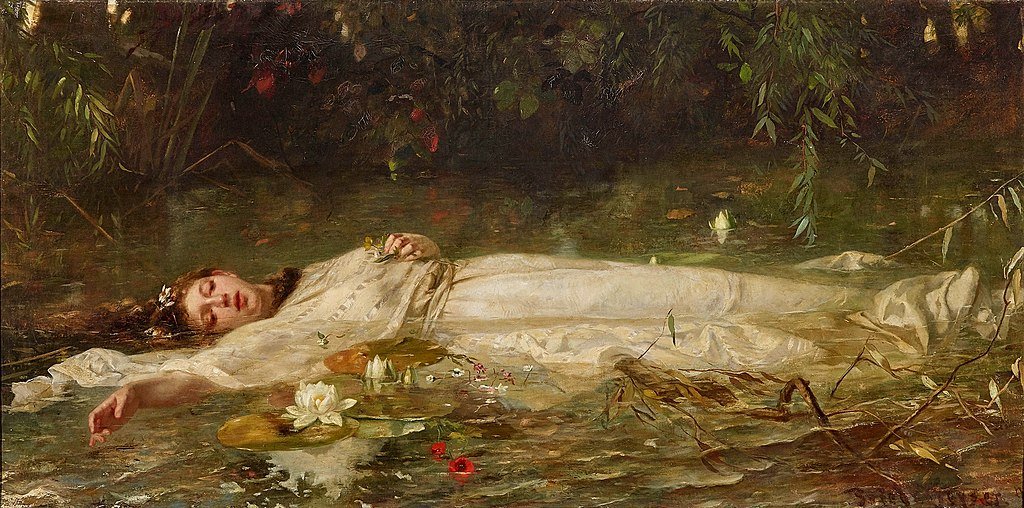Mary Oliver’s White Flowers and the undiscovered country
I read a poem by Mary Oliver that stuck with me. It’s called “White Flowers” and it’s about the boundaries between wakefulness and sleep and life and death. While it’s beautifully written, the poem portrays death in an overly romanticized way. Instead, we’re better served by viewing death through a Stoic lens, without attaching positive or negative sentiments to it.
White flowers
In Oliver’s poem, the speaker lays down in a field “to think about death” but instead, she falls asleep and enters a dreamlike state, “in some sleep-sharpened affinity with the depths.” We also know the speaker could be on the verge of death since she sleeps outside all night and is “so near that porous line where my own body was done with and the roots and the stems and the flowers began.”
Because the lines are full of oxymorons and paradoxes like “resplendently empty” and “never in my life had I felt so plush, or so slippery,” we’re prompted to rethink our typical associations with death.
For example, the poem’s main image of white flowers is a paradox. When white flowers and death are mentioned together, we typically think of orchids, which symbolize death. But the white flowers in Oliver’s poem seem to represent life—they’re “sticky and untidy” and they “open all summer.” In these ways, Oliver prompts us to reassociate death with life.
And as the poem progresses, the language and the images Oliver uses to describe death are increasingly flowery and lyrical: “my body went diving down under the sugary vines,” and “that green energy rose like a wave and curled over me, claiming me in its husky arms.”
The undiscovered country
Oliver’s poem and its romanticized portrayal of death remind me of Hamlet’s famous “To be or not to be” soliloquy, where Hamlet at first imagines death to be a wonderful end to all of his problems, equating it with an “undiscover’d country” and a dream, “To die, to sleep; to sleep, perchance to dream.”
But idealizing death and what it potentially holds is problematic, and it’s pointless to speculate about what comes after death because we will never know. The problem with “White Flowers” and Hamlet is that they propel the notion that death holds something mysterious, intriguing, and potentially better than life.
The Stoic view of death
The Stoics have a better perspective on death (after all, their entire philosophy is about learning how to live and die). To the Stoics, everything external is borrowed—our house, job, relationships, and all circumstances and objects are all on loan.
For instance, Seneca says:
“All the extraordinary things that glitter around us do not belong to us but are only on loan… We must love them with the awareness that we have no promise we will have them forever, nor any promise we will have them for long. We must remind ourselves often that we should love things as if they are sure to leave us, or that they are leaving already. Take what Fortune gives, but realize that it comes with no guarantee.”
The same applies to life. Your life here on earth is borrowed. So we shouldn’t be distraught by or overly fixated with death because it’s guaranteed. And with Stoicism, the reason we view death negatively or, like Oliver and Hamlet, idealistically is because we attach false judgments to it. In reality, death isn’t bad or holds something more, it just is.
Going back to “White Flowers,” the purpose of contemplating death shouldn’t be to fear it or hope that it holds something better than life. The point is to accept death as given and appreciate the life you already have because you could die at any moment (and you don’t know when). That way you’re ready to die when your time comes.
Live a complete life each day
To make the most of our lives, the Stoics believed we should live a complete life each day. Seneca says: “I am aiming to live each day as if it is a complete lifetime…Let us compose our thoughts as if we’ve reached the end. Let us postpone nothing. Let’s settle our accounts with life every day.”
The idea is to do things every day that are gratifying and improve your character—like having a guiding purpose for your life and progressing that purpose each day; or by being more thoughtful, optimistic, and compassionate; or improving your health, fitness, and state of mind; or telling people you care about them.
That way, you lead your best life every day and if you were to unexpectedly die you wouldn’t have regrets.
Which perspective on death resonates with you more: Mary Oliver's portrayal in "White Flowers" or the Stoic perspective? Let me know your thoughts in the comments below!
If you liked this post, check out these:
Imagination, empathy, and John Keats’ negative capability
Time: why it’s it important not to squander and how to spend it




